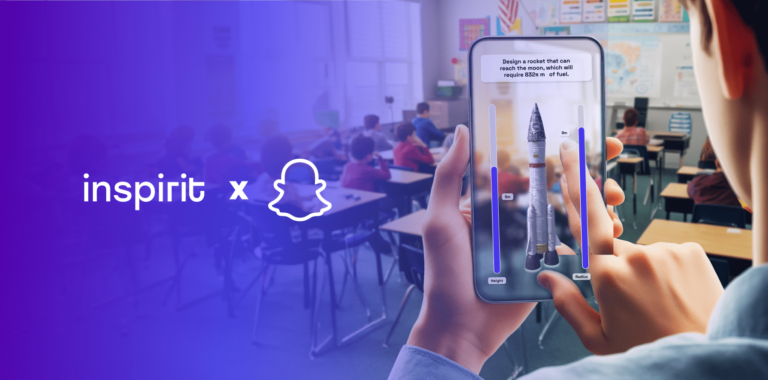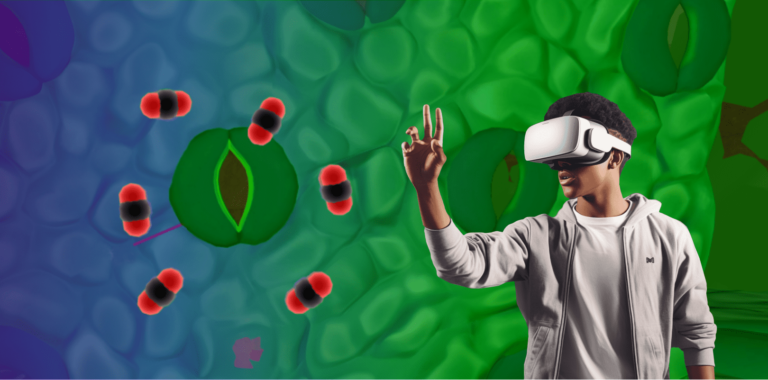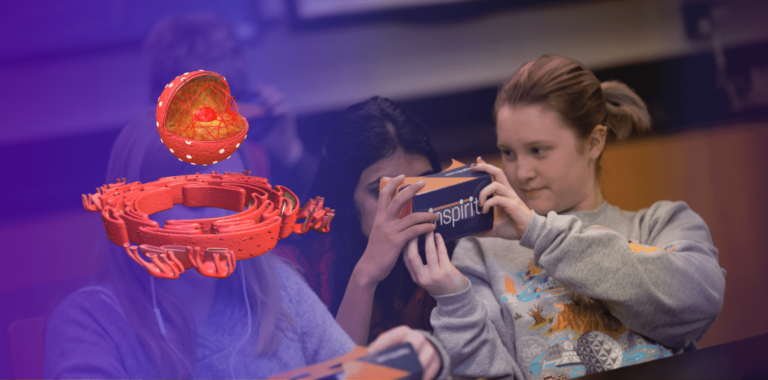Transforming Physics Education at CodeRVA Regional High School
Timothy Ellis, at CodeRVA Regional High School, has leveraged Inspirit’s VR simulations to bring complex concepts to life. Specifically, he used the “Projectile Motion: shooting cannon” VR simulation to teach projectile motion in his Physics class. This strategic use of VR technology aligns with the school’s focus on experiential learning, offering students a hands-on way to grasp complex physics concepts. By adopting this immersive simulation, Ellis aimed to transform traditional learning into an interactive and authentic experience, thereby enhancing student engagement and comprehension of abstract principles in a more tangible manner. This approach underscores the school’s commitment to leveraging innovative technology to facilitate deeper learning.
Timothy Ellis, a passionate educator certified in mathematics,
“It’s been a while since I’ve seen students so driven to engage. It’s terrific when students who missed the VR day come to me asking if they can participate.”
“That initial engagement hooks the kids, making them more keen to understand formal abstract concepts after seeing them in practice.”
“There’s really nothing that substitutes for experiencing something with your own senses.”
physics, and computer science at CodeRVA Regional High School.
About our Partner
Timothy Ellis is a passionate educator certified in mathematics, physics, and computer science at CodeRVA Regional High School. CodeRVA is a pioneering model school in Richmond, Virginia, which has been championed by research groups and politicians aiming to replicate its success statewide.
With Meta’s donation of 30 headsets to the school, CodeRVA was actively looking for a VR content management solution that offers a rich curriculum and effective management strategies for the VR headset. After CodeRVA’s faculty conducted extensive research, including browsing, screening, and attending demo lessons, their search culminated in a partnership with Inspirit. This partnership aims to ensure CodeRVA integrates virtual reality into their classroom in a meaningful way. CodeRVA seeks to enhance educational outcomes through interactive simulations that bring complex concepts to life, thereby creating a rich, hands-on learning experience that supports varied learning styles and promotes a deeper understanding of academic content.
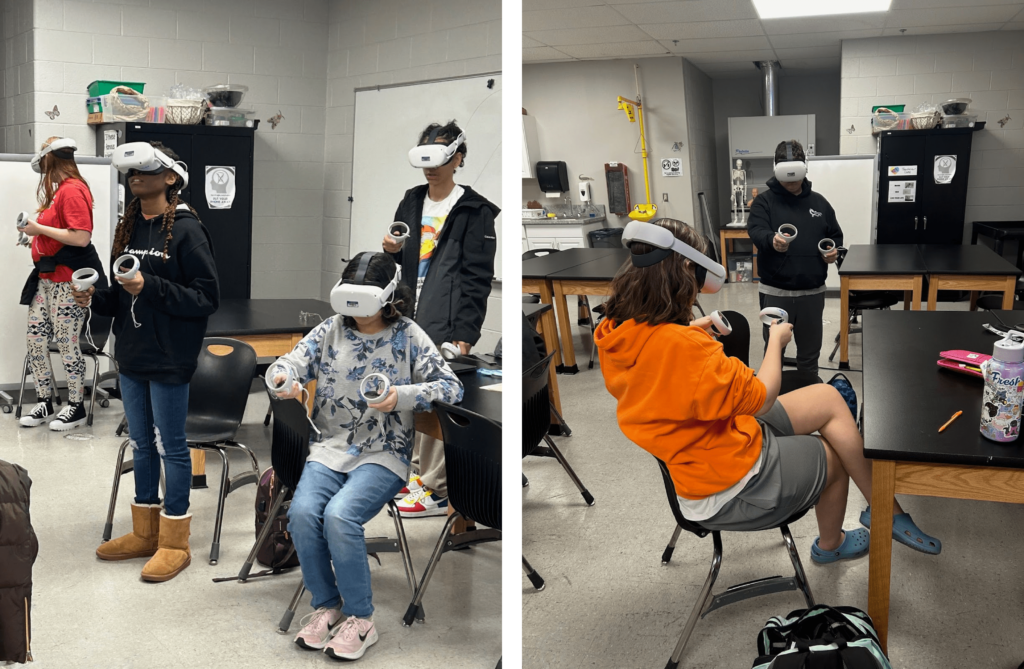
The Simulation Session
Timothy Ellis has used the “Projectile Motion: shooting cannon” VR simulation to teach projectile motion in his Physics class. Through this immersive module, students explore the dynamics of projectile motion, engaging with concepts like initial velocity, launch angles, and gravitational forces. The simulation is designed to achieve comprehensive learning objectives, including understanding the impact of gravity and air resistance on trajectories, predicting outcomes based on varying launch conditions, and analyzing velocity changes over time. Activities within this VR experience allow students to interact with a virtual cannon, manipulate variables, and observe the effects on projectile motion, offering a hands-on approach to learning complex physics principles. This methodical exploration ensures students can calculate key aspects of projectile motion, such as time of flight, maximum height, and range, fostering a deep and practical understanding of the subject matter.
Tim’s approach involved students working in pairs, engaging with the VR simulation one day and exploring related questions in a classroom discussion the next day. On the exploration day, students teamed up in pairs for the VR activity, with one student navigating the VR environment while the other assisted and documented findings based on predefined questions. This collaborative setup not only facilitated an interactive learning environment but also encouraged effective communication and teamwork, as students had to relay their VR experience and findings to their partner. This arrangement maximized the use of the VR headsets available, ensuring all students actively engaged with the material.
The Learning Affordances and Benefits
01 – Immersive Visualization-> Enhanced Understanding
Timothy Ellis emphasizes the unparalleled value of immersive VR experiences in translating abstract physics concepts into tangible visuals. This bridging of theory and sensory experience aligns with pedagogical best practices, moving from concrete examples to abstract theories, thereby scaffolding student understanding from direct observation to complex ideation.
“There’s really nothing that substitutes for experiencing something with your own senses. VR is as close as we can get to this without the actual physical experience, like shooting a cannon…It’s generally considered good pedagogical practice to start with concrete work, observations, and relationships, then move into more abstract ideas.”
-Timothy Elli
02 – Interactive Engagement -> Active Learning
The hands-on nature of VR simulations like the “Projectile Motion: shooting cannon” actively involves students in their learning journey. This direct participation fosters a deeper connection with the material, as students can manipulate variables themselves and see the immediate impact of these changes on the motion of projectiles. Ellis notes the significant boost in student motivation and understanding when lessons incorporate interactive VR simulations. This engagement, which turns passive learning into an active discovery process, results in higher retention rates and a deeper grasp of physics principles, as students are more inclined to explore and understand the underlying concepts.
“That initial engagement hooks the kids, making them more keen to understand formal abstract concepts after seeing them in practice.”
“It’s been a while since I’ve seen such driven engagement from students. Anything that makes them want to learn, even in a non-quantitative, softer way, and participate in class, I will absolutely incorporate as much as possible.”
-Timothy Ellis
03 – Collaborative Opportunities -> Enhanced Communication Skills
In Timothy Ellis’s teaching strategy, students working in pairs during VR sessions promote active learning and enhance communication and teamwork skills. As one navigates the VR environment and the other assists with documentation and analysis, effective communication is essential. This collaborative process builds essential soft skills for both academic and professional settings. Furthermore, by alternating between immersive VR simulations and classroom discussions, Ellis creates a collaborative learning atmosphere, encouraging active communication and collaboration. This approach deepens their understanding of physics concepts and develops their communication abilities, making learning interactive and interconnected.
“This approach is really great for fostering meaningful discussions
based on observation data made by the students.”
-Timothy Ellis
04 – Authentic Experiences -> Real-world Application
The VR simulation provides a bridge between theoretical knowledge and its application in real-world scenarios. By simulating the physical act of launching projectiles under various conditions, students can better understand the practical implications of physics in everyday life and in engineering contexts. This connection between classroom learning and real-world application is crucial for preparing students for future challenges in science and technology fields.
“We had this opportunity to integrate virtual reality into our classroom
in a meaningful way.”
-Timothy Ellis
Related Simulations in Physics Subject:
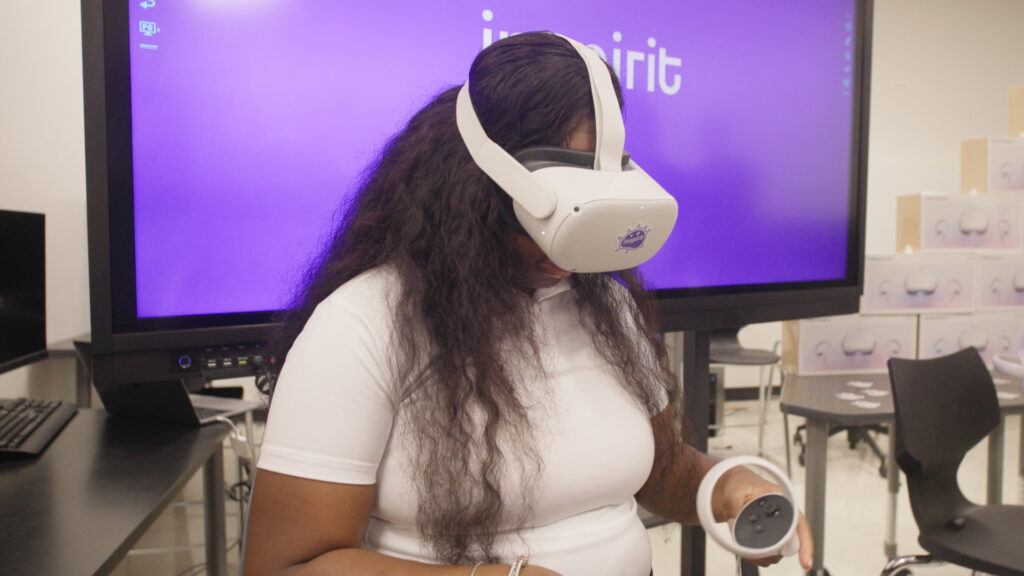
Bring Home the Lab of the Future
- and perform experiments in virtual environments to achieve core science learning outcomes.
- All our experiences run on Oculus Quest and HTC Vive and are built to immerse you in visual realism through real world-scale tracking.
Change the Way You Learn and Interact With Science and Your Surroundings
- Our virtual simulations are a combination of NGSS and State Standards-aligned content and research-based design aimed to redefine experiential learning of the core sciences across the STEM disciplines of Biology, Physics, and Chemistry.
- You can undertake a novel approach to learning through our VR experiences that will change the way you understand and interact with science and your surroundings.
Acknowledgements

Many thanks to Timothy Ellis, Sitha Wenberg, teachers, admins and students at CodeRVA Regional High School.
At Inspirit, Yuqi Wang and the Customer Success team at Inspirit made this case study possible.
Further Readings (Reference)
Gee, J. Paul. (2003). What video games have to teach us about learning and literacy. Palgrave Macmillan.



